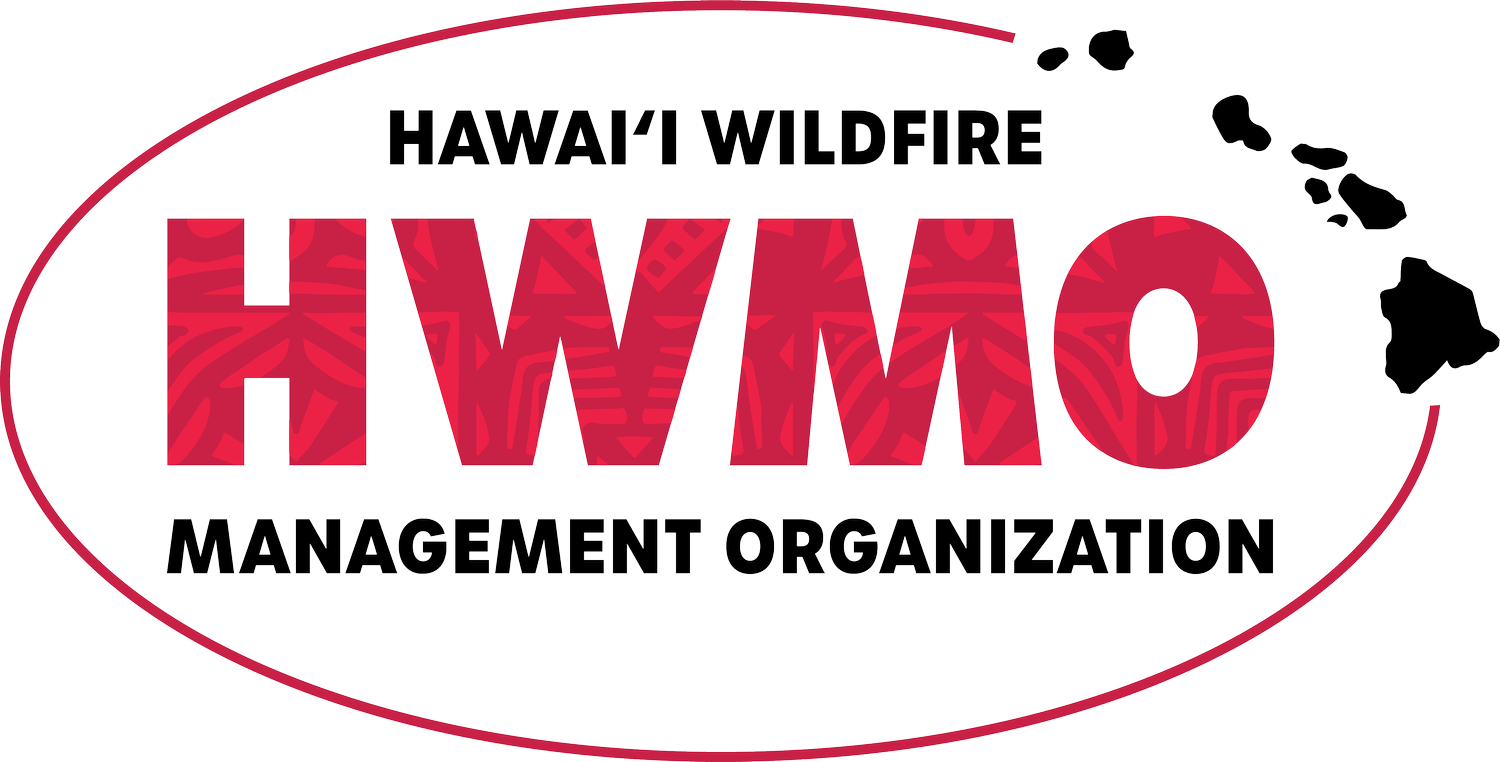In Hawaii, wildfire has devastating impacts on our communities and native ecosystems. With land use and climate changes, wildfire is a significant and growing hazard in many places across Hawaii.
Research in wildfire science shows that vegetation is a key ingredient in the recipe for recurring wildfire. Vegetation management is essential for wildfire hazard mitigation strategies that:
reduce wildfire hazard;
create safer conditions for firefighters; and
serve as key climate adaptation strategies for our communities, economies and environment.
Fire follows fuel and the impacts do not abide by property boundaries. Therefore, reducing wildfire hazard is a landscape-level issue that we need to collaboratively tackle together to create safer and more wildfire resilient communities.
In 2015, HWMO’s Technical Advisory Committee, comprised of more than 35 fire and natural resource experts from across the state, discussed Hawaii’s lack of consolidated landscape-level information on vegetative fire fuels treatments.
To start to fill the gap, HWMO conducted a Rapid Mapping Assessment and facilitated Collaborative Action Planning on Vegetation Management in 2018-19 to:
Better understand all of the important hazard reduction already happening by diverse land managers;
Identify and prioritize actions that address the island-wide fire issue to optimize expenditures and efforts and maximize protection at the landscape-scale;
To kick-start collaboration, information sharing, and integrate fire-thinking into current activities to address the cross-boundary fire risk.
We thank State Division of Forestry and Wildlife, University of Hawaiʻi CTAHR Cooperative Extension, and Pacific Fire Exchange for their collaborative support on this project. Funding was provided by Hawaiʻi State Grant-in-Aid Program, 2016, and the U.S. Forest Service, Pacific Southwest Region, under the terms of Grant No. 16-11052012-146 and No. 17-DG-11052012-143. USDA is an equal opportunity provider and employer.
We also thank the many mapping participants, workshop attendees, and survey respondents who made this all possible!
The summary results of the Rapid Mapping Assessment and Collaborative Action Planning can be found below.

















